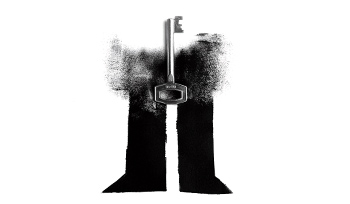Submitted by Denitsa on
UNITED KINGOM
Title:
The Catholic Child Welfare Society and others (Appellants) v. Various Claimants (FC) and The Institute of the Brothers of the Christian Schools and others (Respondents)
Court:
Supreme Court of the United Kingdom
Citation:
[2012] UKSC 56
Date:
21 November 2012
Case Summary:
Background:
A group of 170 men alleged that they were physically and sexually abused by their teachers while residing at a school for boys in need of care (the “School”) between 1958 and 1992. The teachers were members of the Brothers of the Christian Schools (the “Institute”), a religious organisation who sent its members to the School as part of its mission to “teach children, especially poor children, those thing which pertain to a good and Christian life.” However, the members worked as teachers through contracts of employment with the School. The Court in this case had to decide whether the Institute can be held liable for the abuse perpetrated by its members under the doctrine of vicarious liability. The School argued that the Institute should share responsibility for the acts of its brother members. The Institute responded that only a body managing a school and employing a brother in that school as a teacher should be vicariously liable for his wrongdoing.
Issue and resolution:
Vicarious liability for child sexual abuse. The Court held that the Institute could be held liable for the alleged sexual abuse committed by its brother members because the relationship between the Institute and its members was sufficiently akin to one of employer and employee, and there was a close connection between that relationship and the sexual abuse allegedly committed by the brothers while teaching in the School.
Court reasoning:
The Court closely examined the School’s claim against the Institute under a two part test consisting of the following elements: (1) whether the relationship between the Institute and its members was capable of giving rise to vicarious liability, and (2) whether the alleged acts of sexual abuse were connected to that relationship in such a way as to give rise to vicarious liability. Noting that the law of vicarious liability is “on the move,” the Court held that the first element of vicarious liability can be based on a relationship that, while not arising under a formal contract of employment, is sufficiently “akin to that between an employer and an employee.” The court explained that the Institute’s relationship with its members was sufficiently akin to one of employment based on the hierarchical structure of the Institute, the ability of the Institute to direct where its members taught, the importance of teaching activity in the organisation’s mission and the manner in which its members were bound by its rules. In addition, the court held that the second element was also satisfied based on the close connection between the Institute’s relationship with its members, and the alleged sexual abuse its members committed while pursuing their mission to provide an education to vulnerable students living on the premises of the School. As a result, the Court held that the Institute should be responsible for the alleged acts of its members even though they were employees of the School.
Impact:
The Court adopted the approach taken in other recent court decisions extending the reach of the doctrine of vicarious liability beyond the traditional employment context, including JGE v. The Trustees of the Portsmouth Roman Catholic Diocesan Trust which also concerns historical child sex abuse.
Notes:
For more information on the issue of child sexual abuse and religious institutions, including a selection of case law, please see CRIN's campaign 'End sexual violence in religious institutions'.
Link to Full Judgment:
https://www.supremecourt.uk/decided-cases/docs/UKSC_2010_0230_Judgment.pdf
This case summary is provided by the Child Rights International Network for educational and informational purposes only and should not be construed as legal advice.

